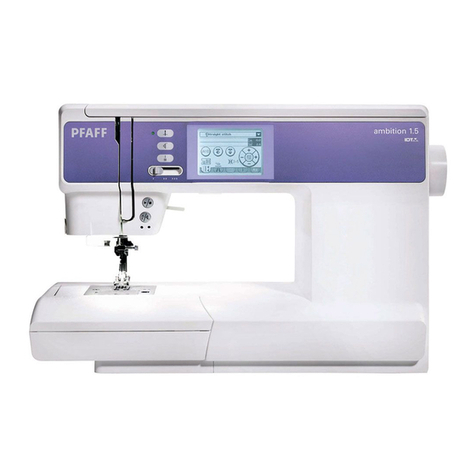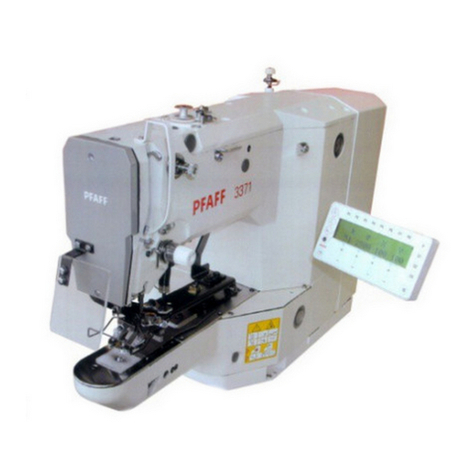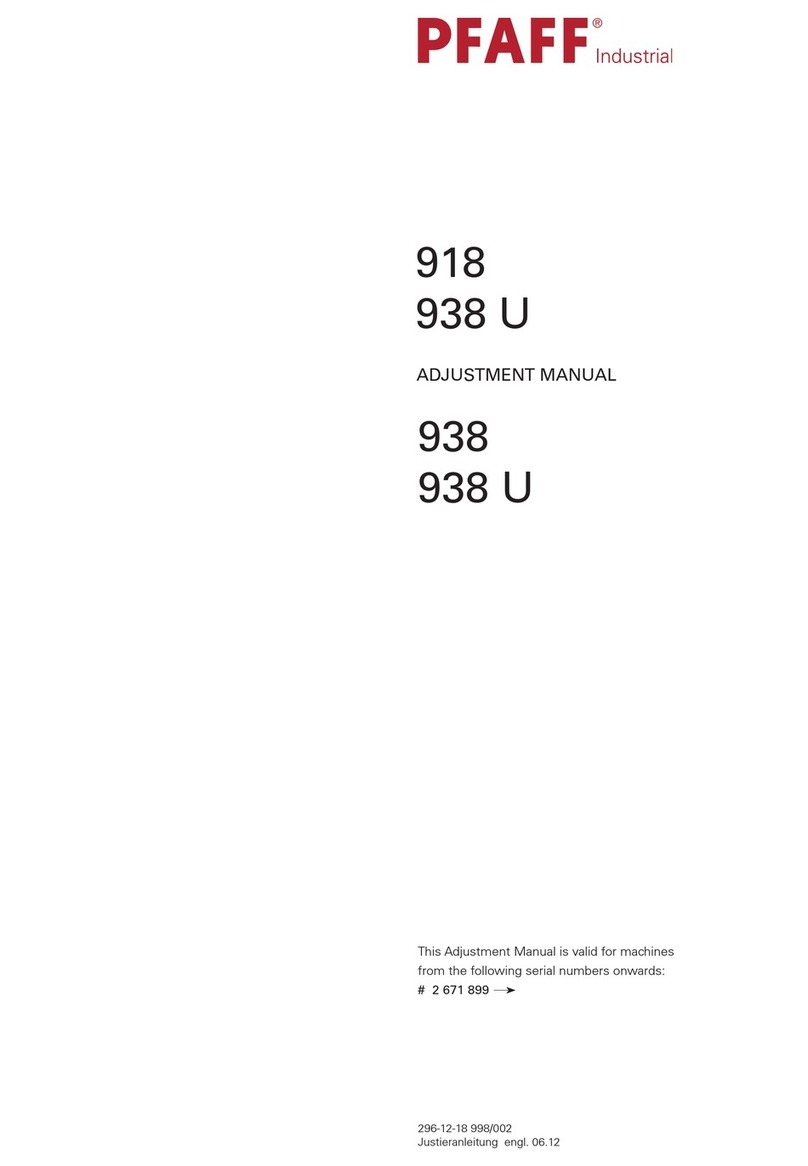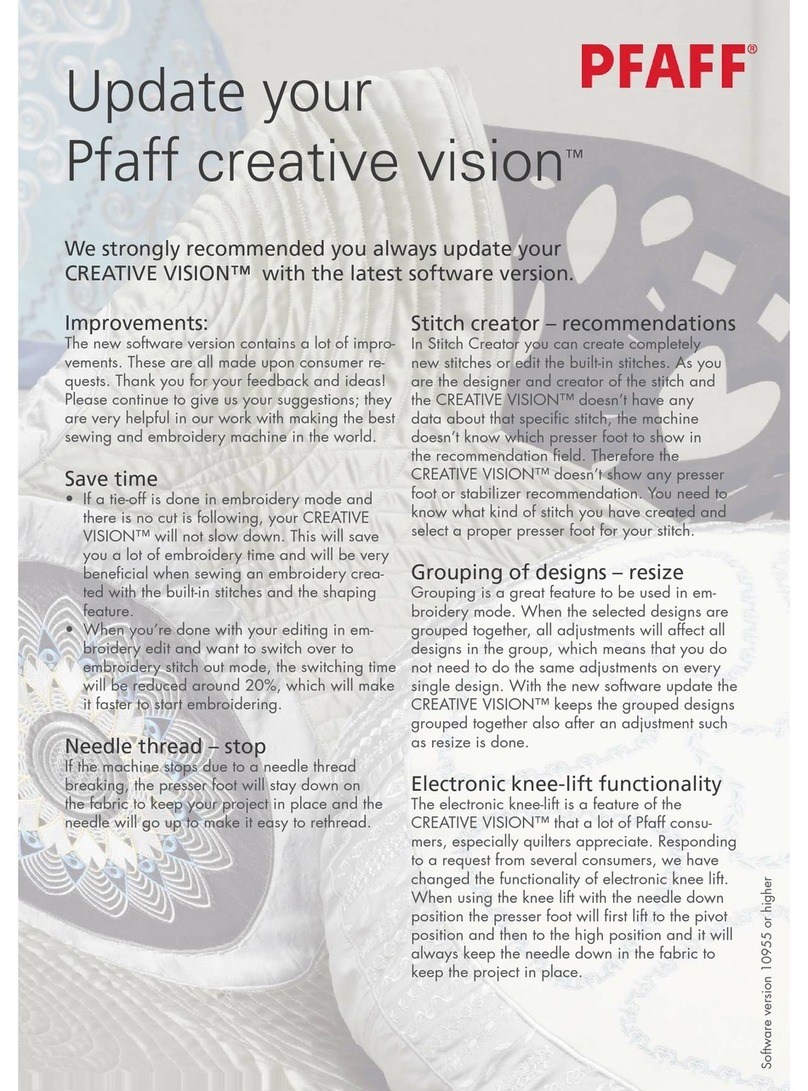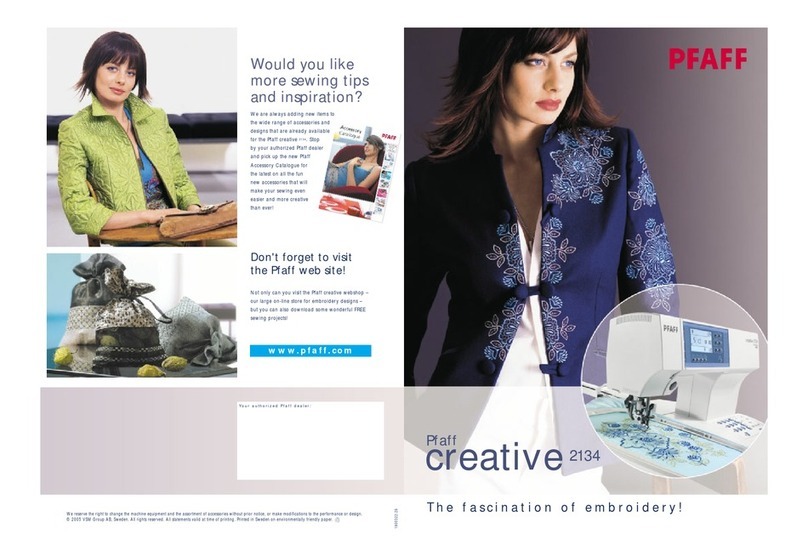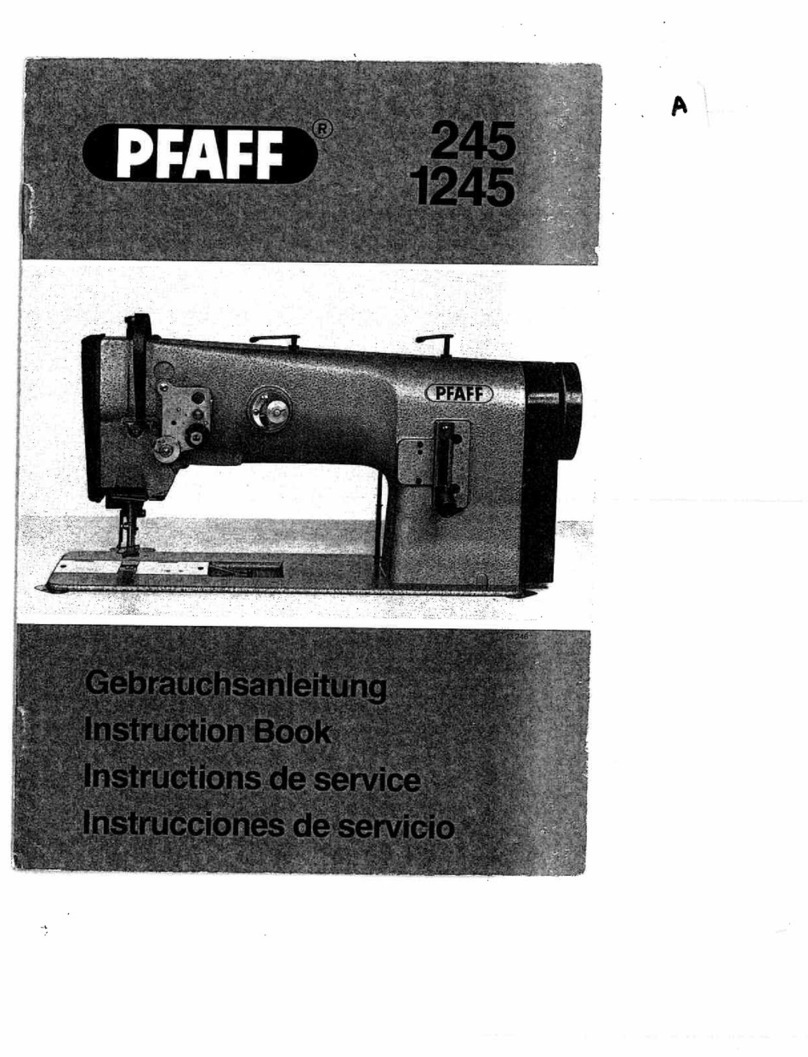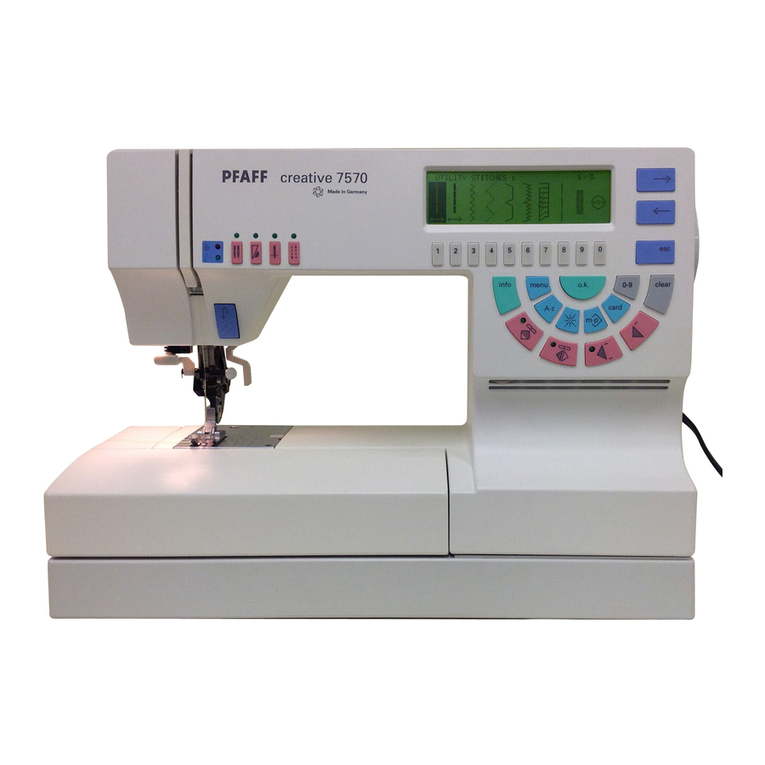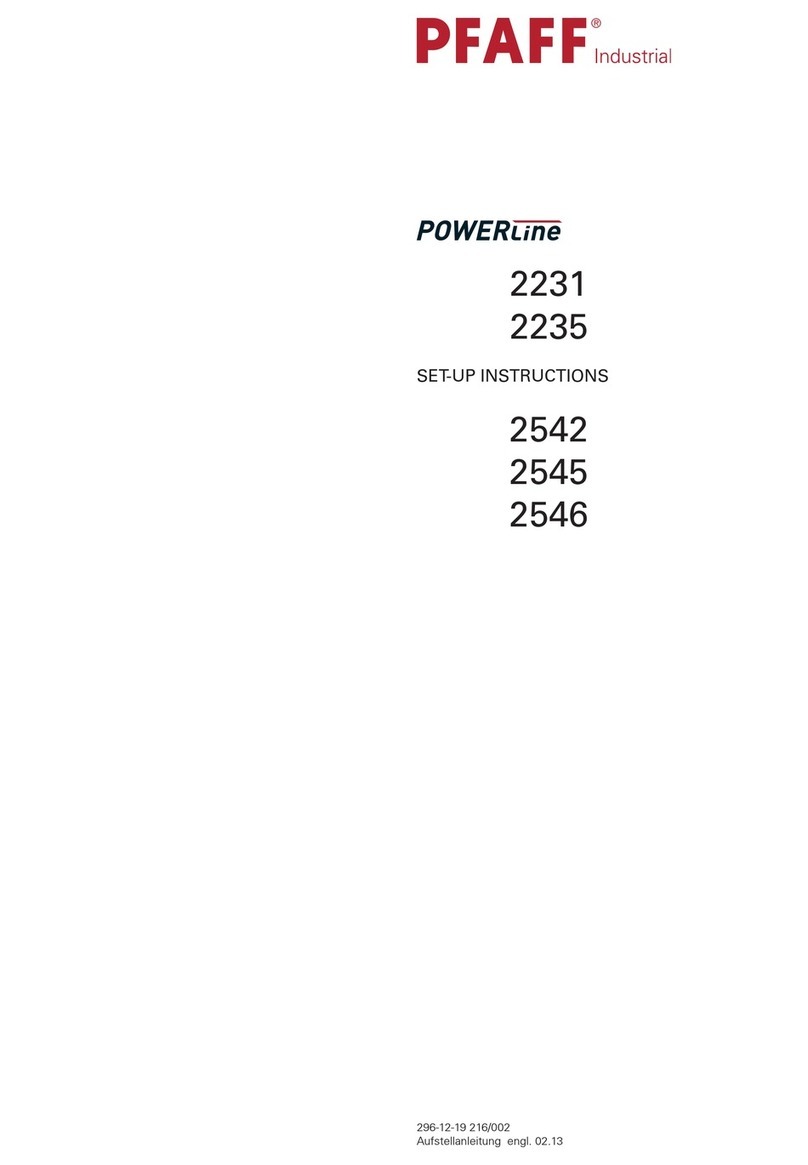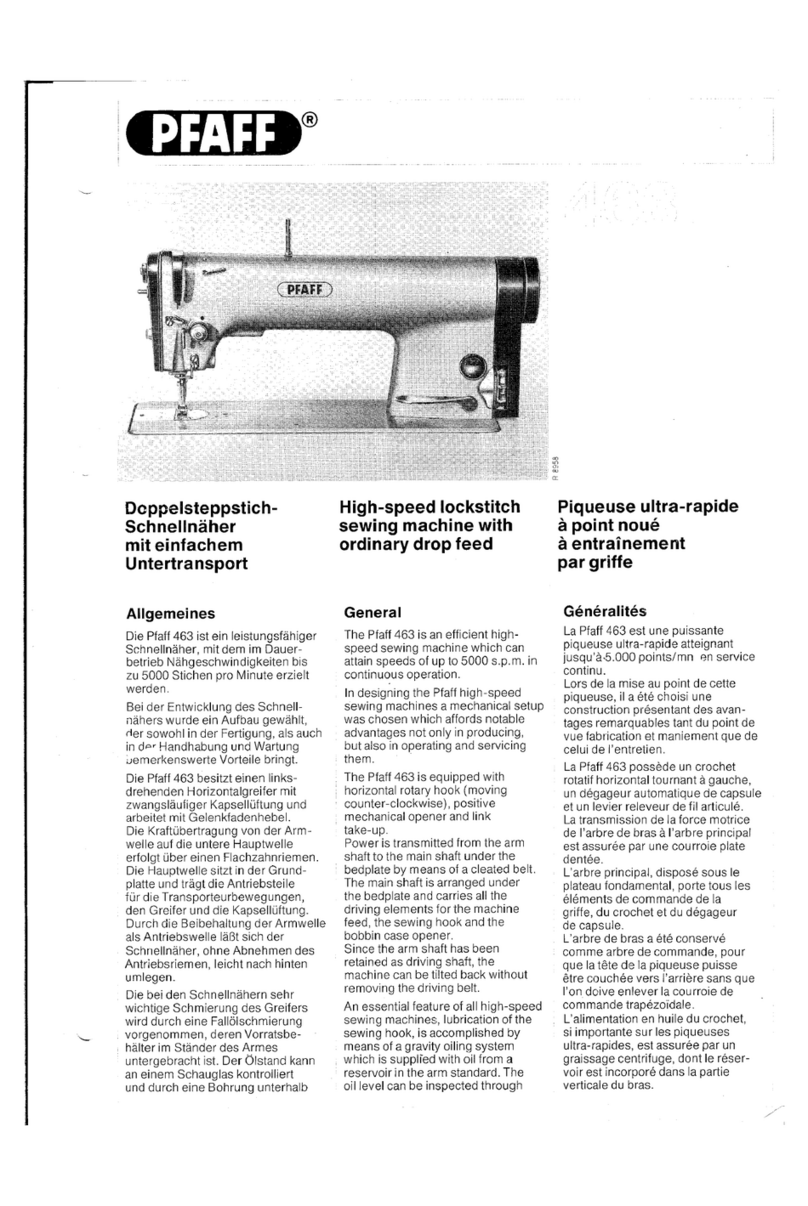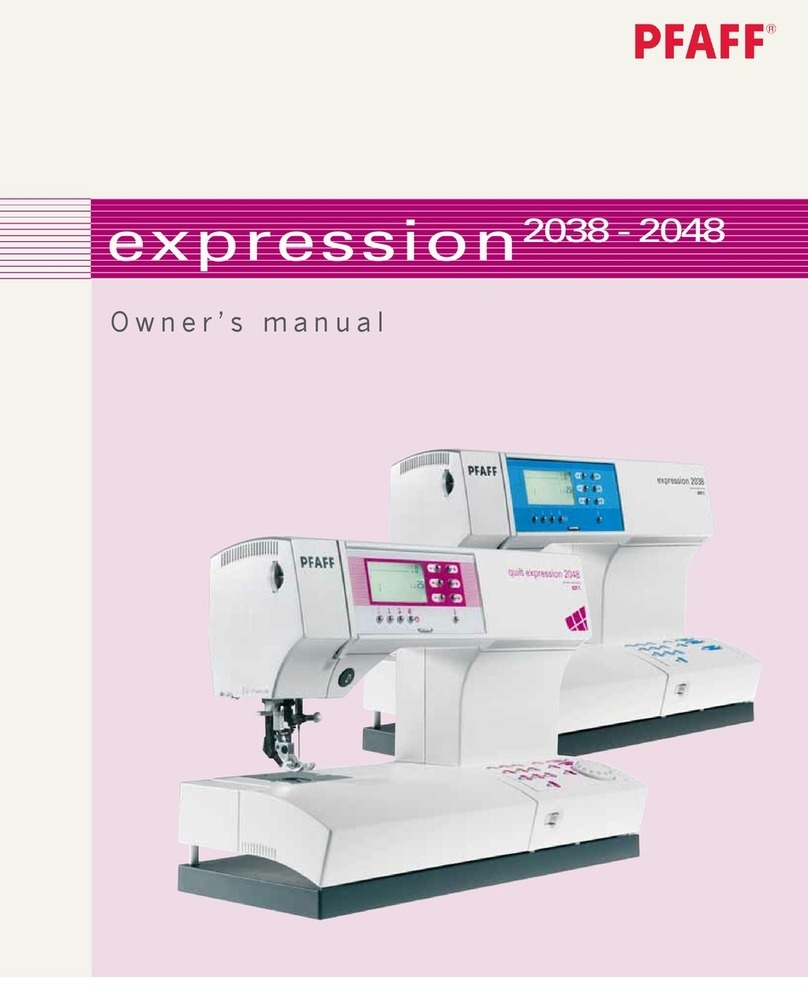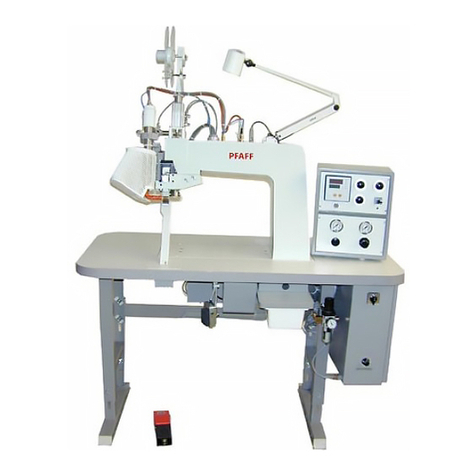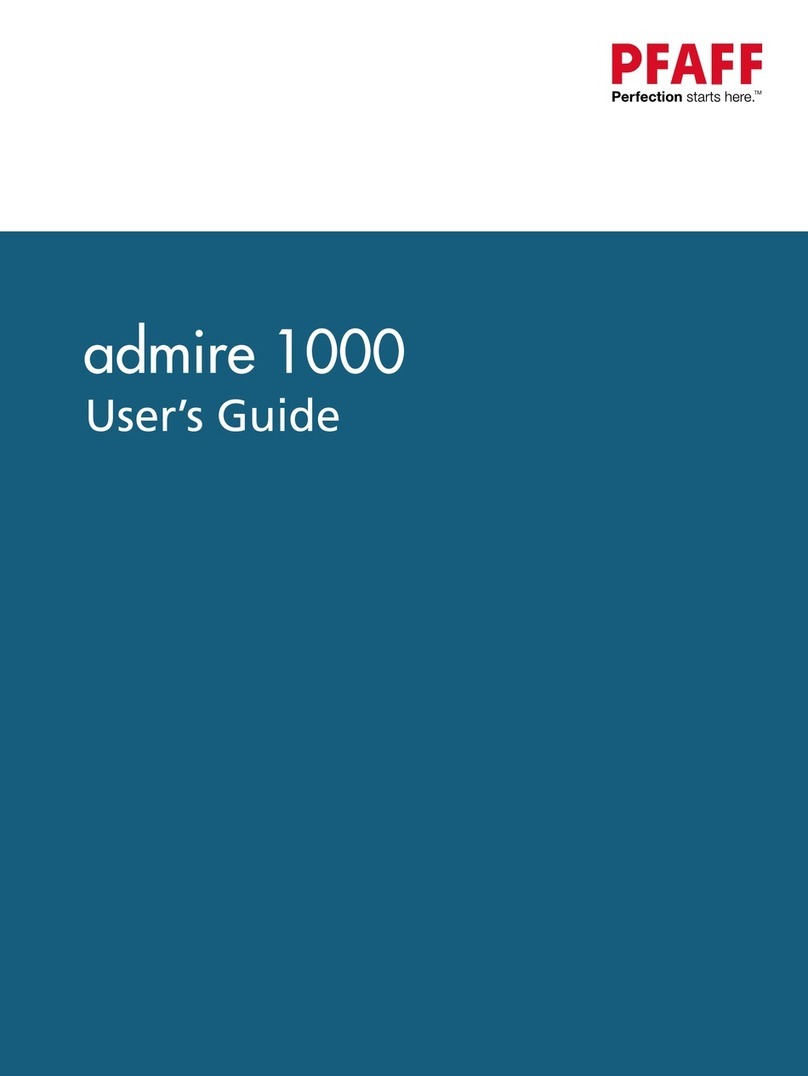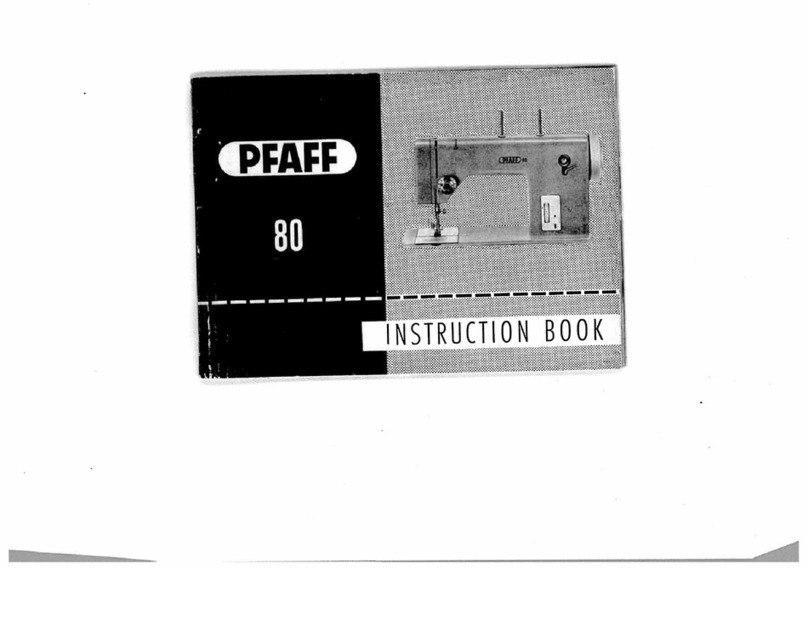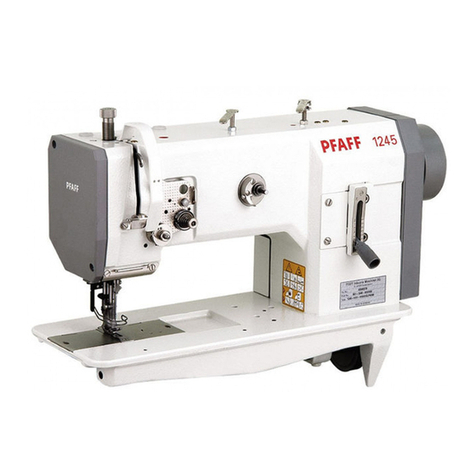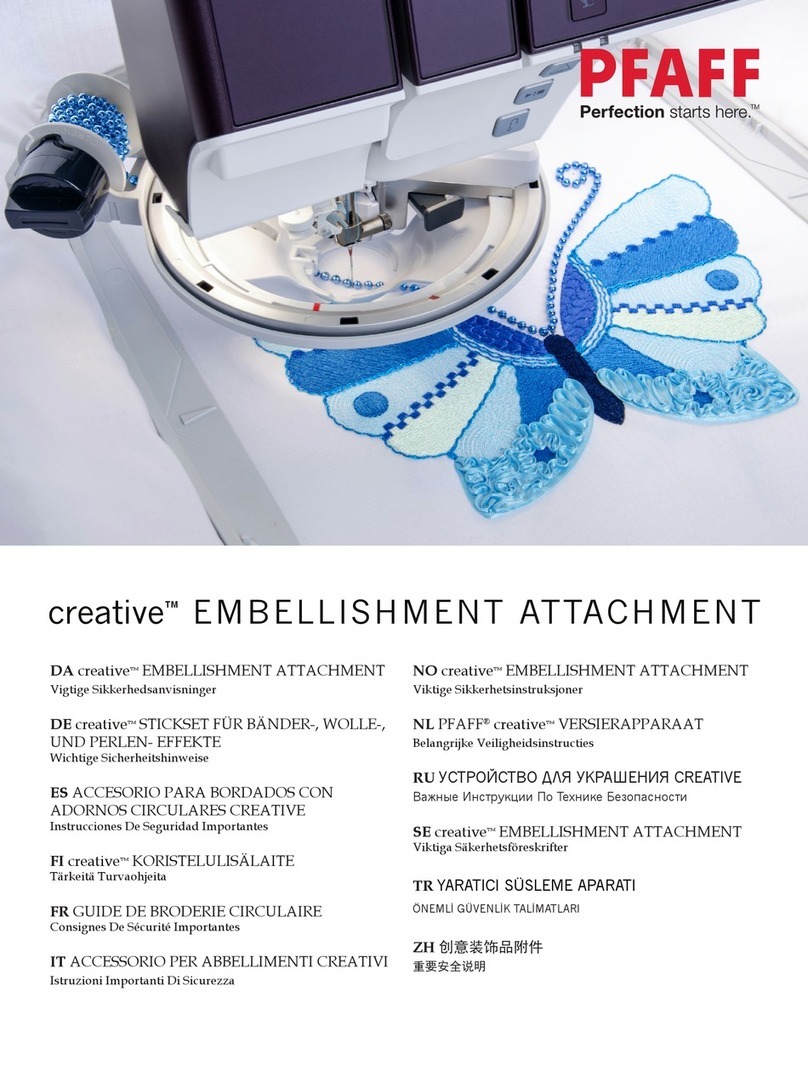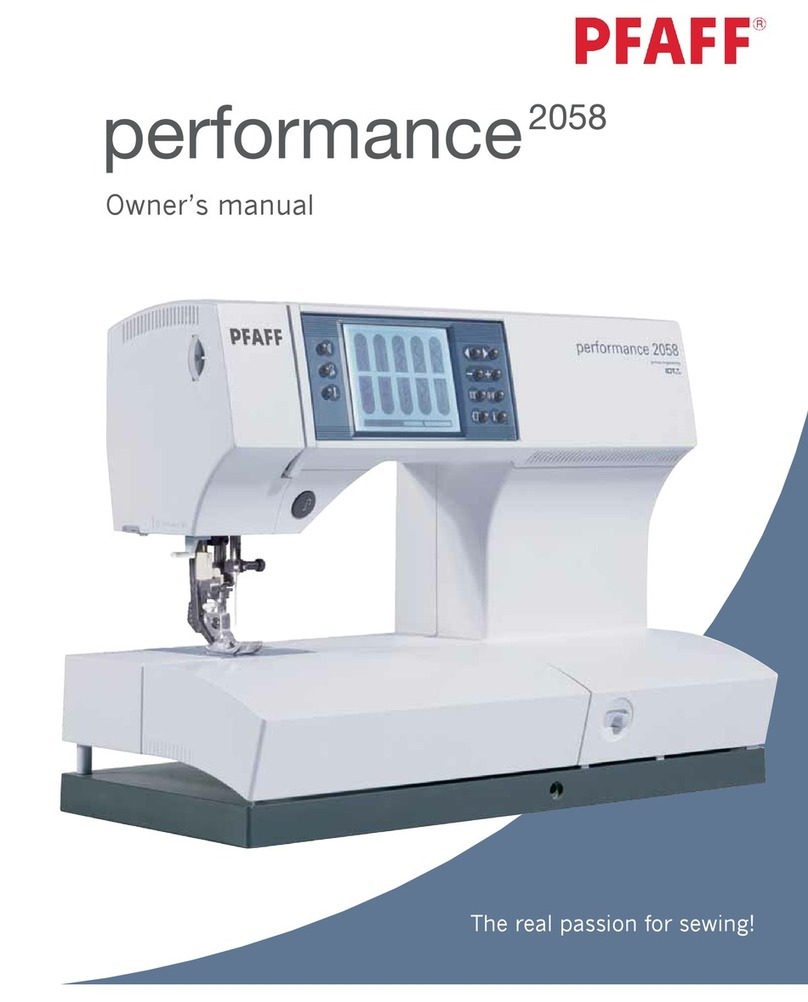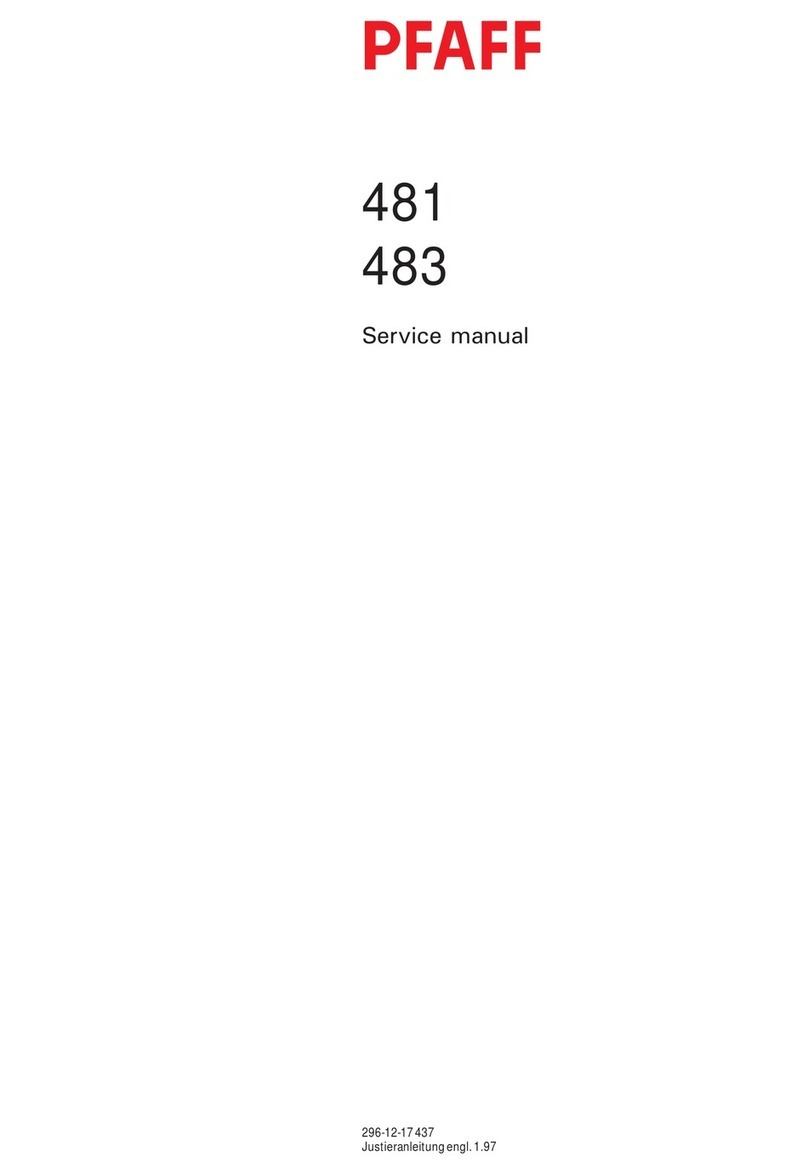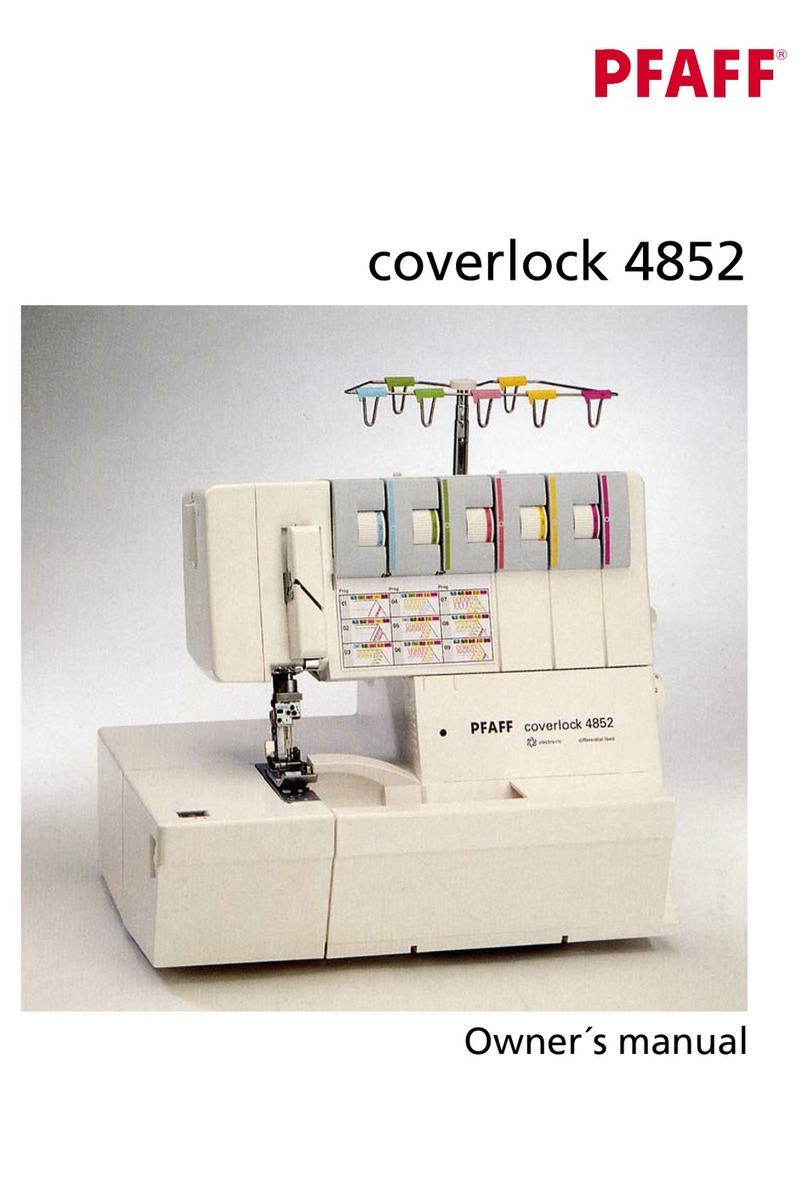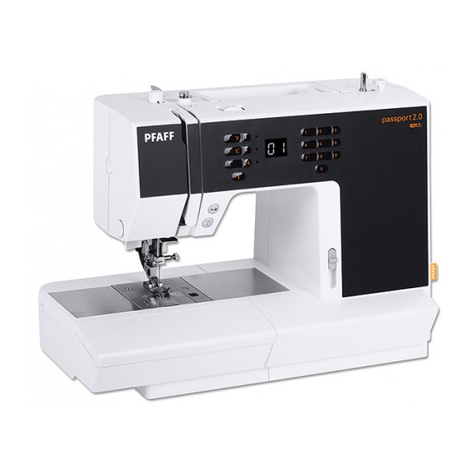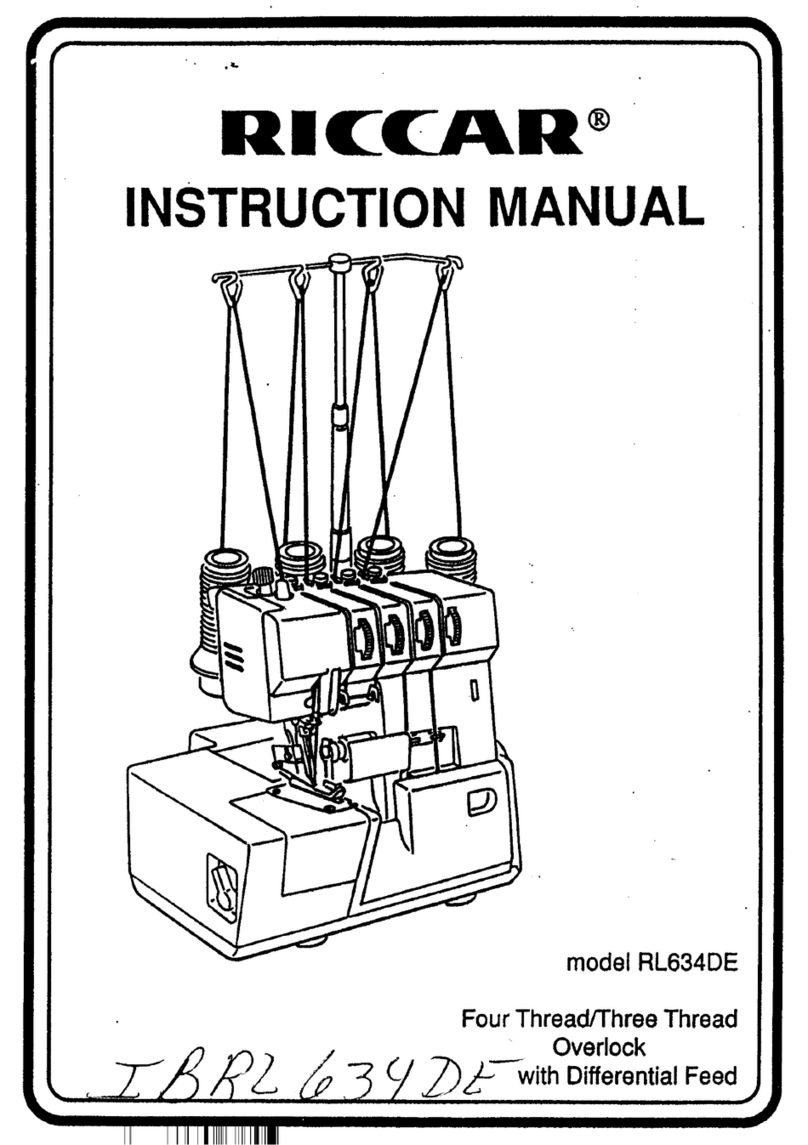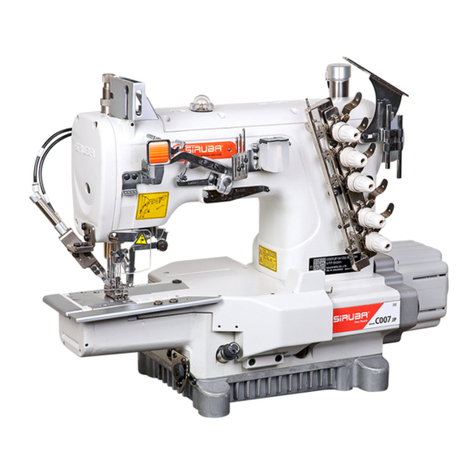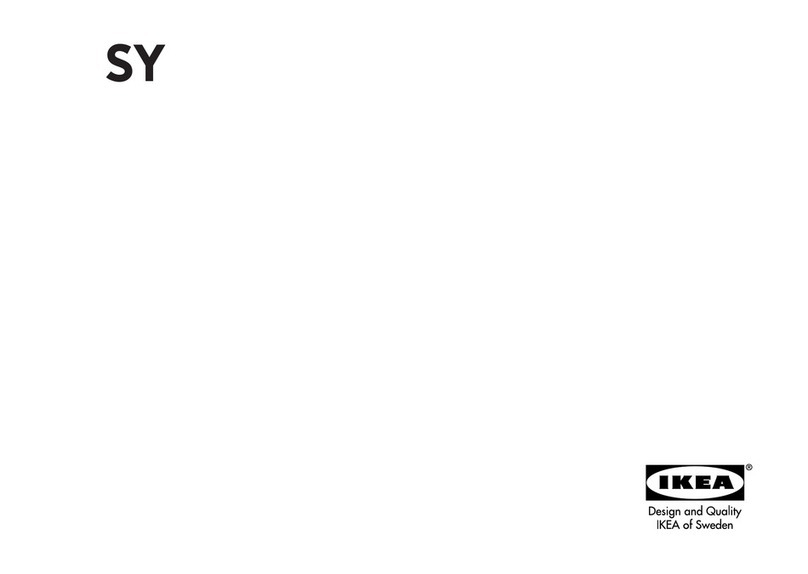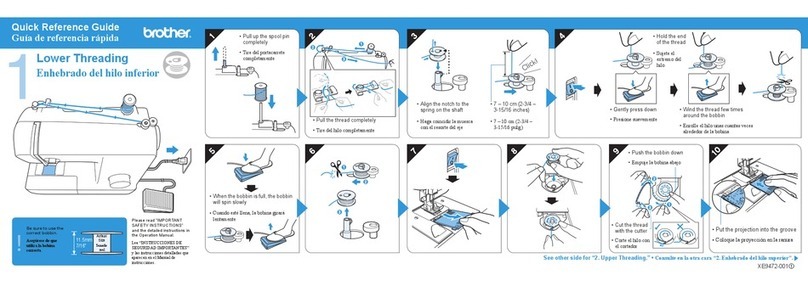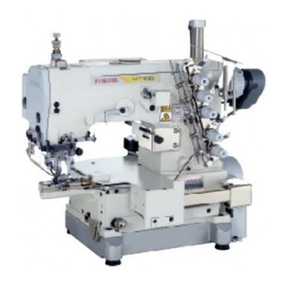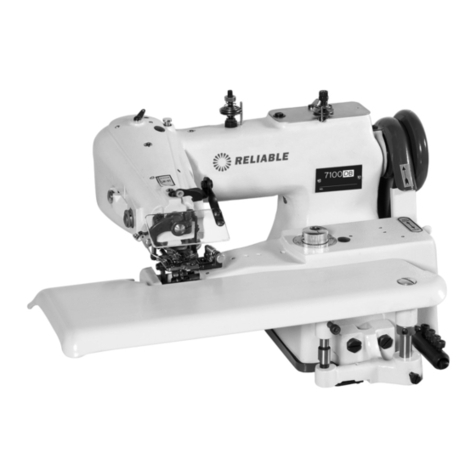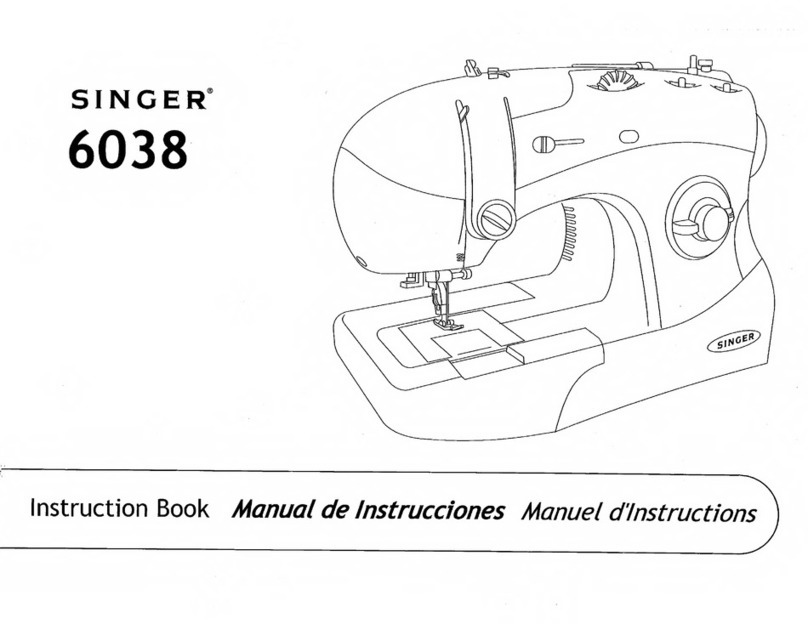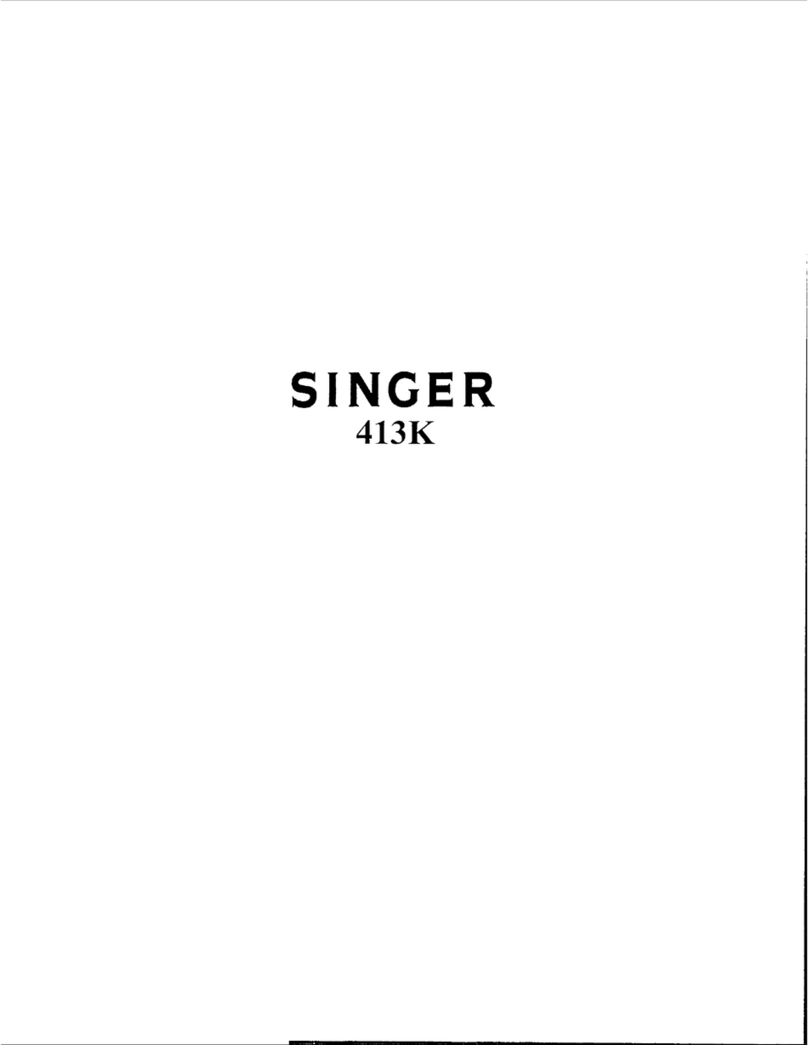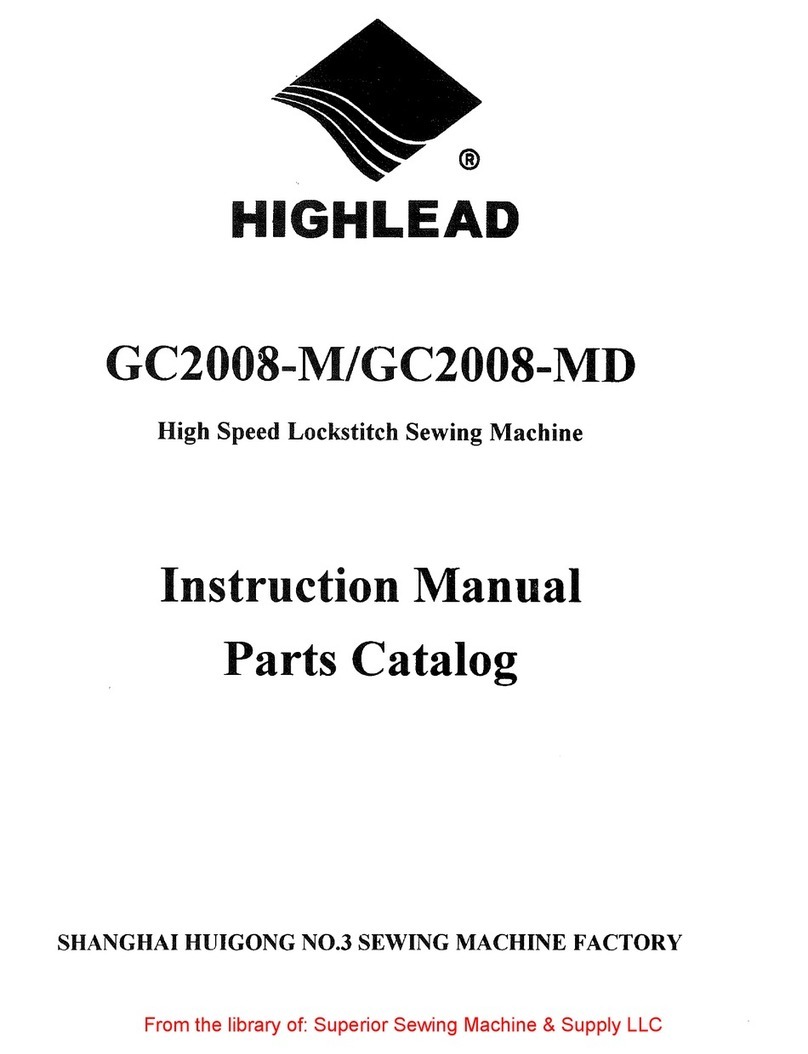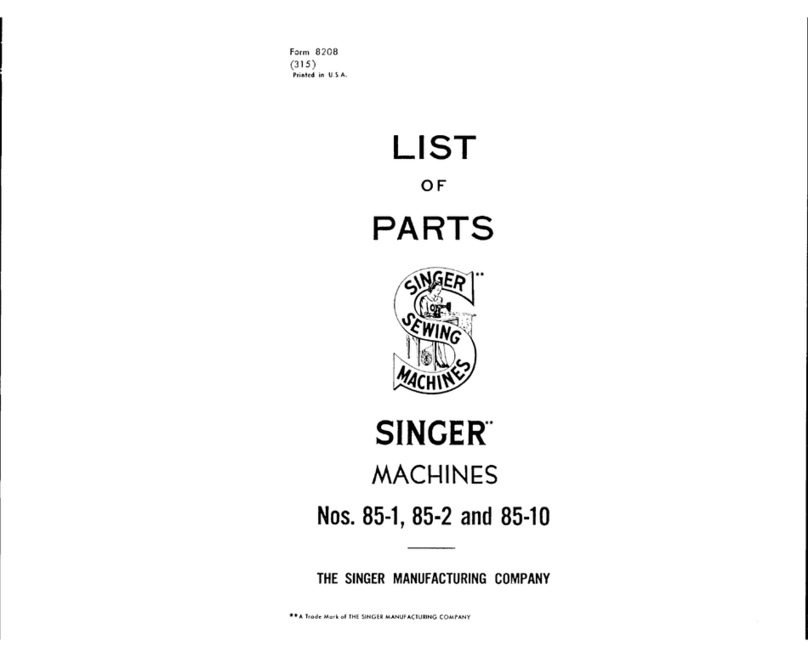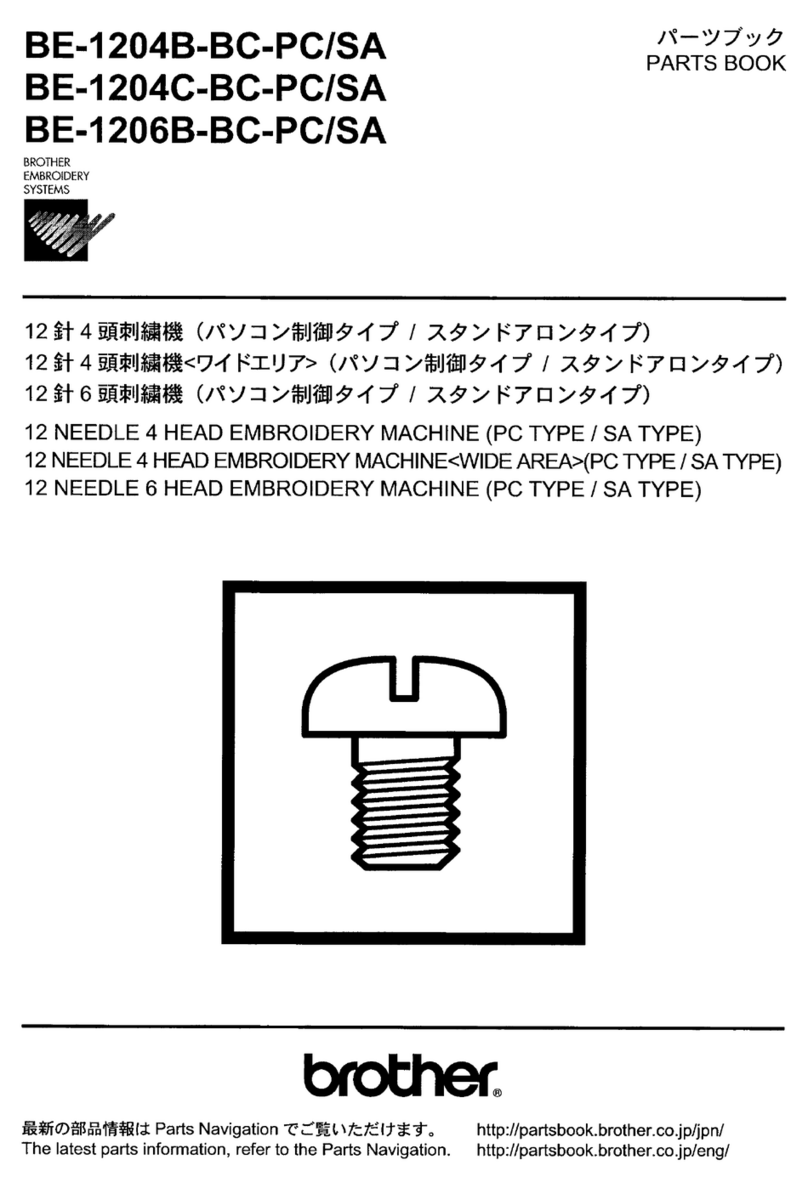
Adjustment
5
13 Adjustment
The illustrations in this chapter show the PFAFF 1294 two-needle sewing
machine.
Various settings must be carried out only on one side with the PFAFF 1293
single-needle sewing machine, i.e. in the right hook area.
Observe and comply with all instructions in the operating manual's chapter
1 Safety! In particular make sure that all safety covers are installed again
correctly after making adjustments, see chapter 1.06 Operating manual
hazard information!
Unless otherwise stated, the machine must be disconnected from the power
supply before all adjustment work!
Risk of injury due to accidental machine start-up!
Notes on adjustment
All adjustments in this manual are based on a fully assembled machine and may only be car-
ried out by technical staff trained for this purpose. Machine covers, which have to be re-
moved and replaced to carry out checks and adjustments, are not mentioned in the text.
The order of the following chapters corresponds to the most logical work sequence for ma-
chines that have to be completely adjusted. Both the preceding and following chapters must
be observed if only specific individual work steps are carried out. Screws and nuts indicated
in brackets () are fastenings for machine parts, which must be loosened before any adjust-
ment and tightened again afterwards.
13.01 Tools, gauges and other accessories
O1 set of screwdrivers with knife widths from 2 to 10 mm
O1 set of wrenches with jaw widths from 7 to 14 mm
O1 set of Allen keys from 2 to 6 mm
O1 metal ruler (order no. 08-880 218-00)
ONeedle rise gauge (order no. 61-111 600-02)
OScrew clamp (order no. 61-111 600-35)
13.02 Abbreviations
t.d.c. = top dead centre
b.d.c. = bottom dead centre
13.03 Explanation of symbols
Activities to be performed or important information in this adjustment manual are empha-
sised by symbols. The symbols used have the following meaning:
Note, information
Maintenance, repairs, adjustment, service work
(only to be carried out by technical staff)
